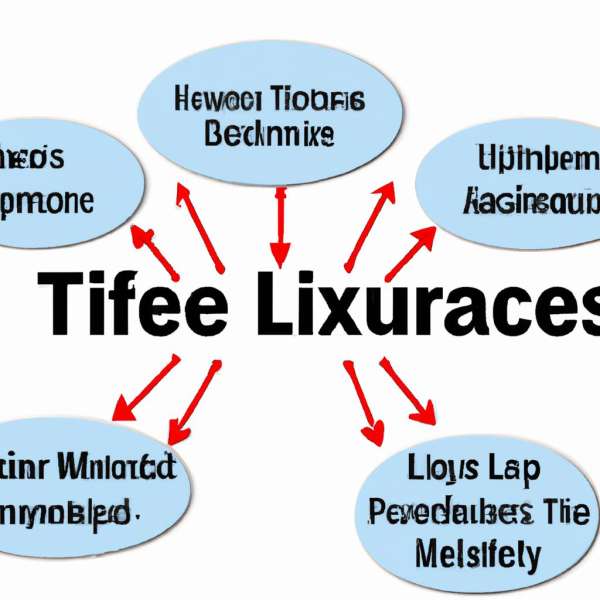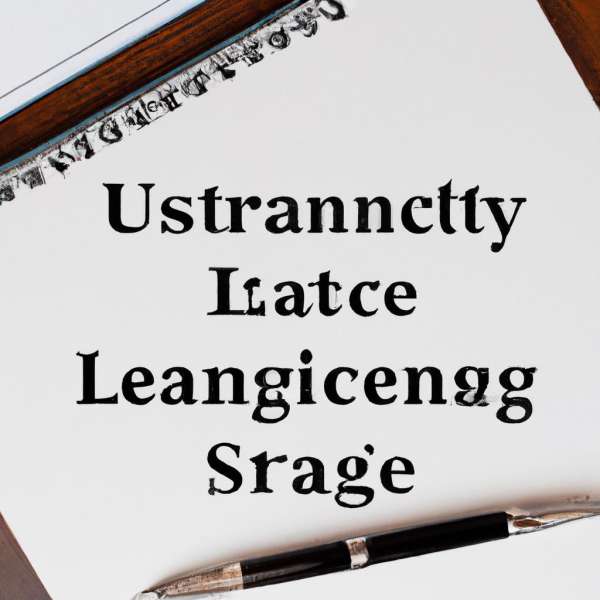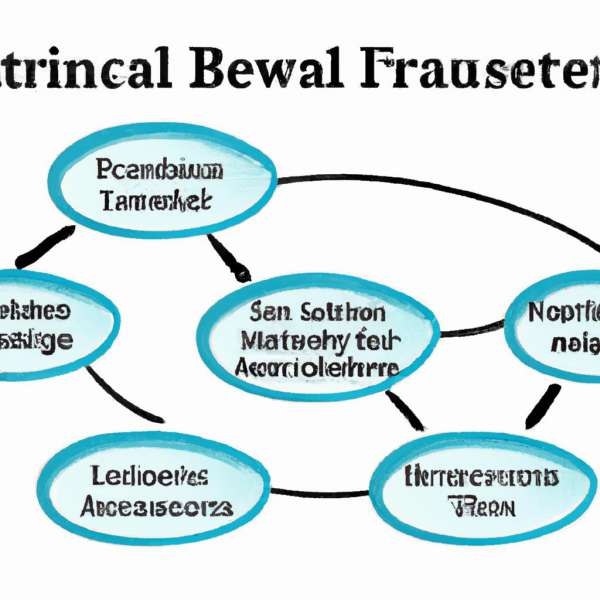In a world where financial stability and foresight intertwine, the decisions we make today can echo through generations. One such decision is the prudent use of life insurance trusts, a strategy that not only safeguards your loved ones but also offers a compelling avenue for minimizing taxes. As the complexities of estate planning grow, so too does the necessity for innovative solutions that address both protection and preservation of wealth. Life insurance trusts stand at the intersection of these needs, providing a dual benefit—ensuring that your financial legacy endures while optimizing tax efficiency. In this article, we will explore the intricate workings of life insurance trusts, uncovering their potential to simplify the often daunting tax landscape and empower you to make informed decisions about your financial future. Whether you’re seeking to enhance your estate plan or simply curious about the benefits of these financial tools, join us as we navigate the insightful terrain of life insurance trusts and their role in effective tax minimization.
Understanding Life Insurance Trusts and Their Tax Benefits
Life insurance trusts serve as powerful financial tools for managing your life insurance assets while providing various tax advantages. One of the fundamental benefits of establishing a life insurance trust is the ability to remove life insurance proceeds from your taxable estate. This can be especially crucial for individuals with sizable estates, as it helps to reduce the overall value subject to estate taxes upon death. Consequently, the named beneficiaries can receive the full benefit of the policy, free from the burden of taxation.
The **irrevocable nature** of these trusts is also significant in terms of tax implications. Once you place a life insurance policy into a trust, you relinquish control over it, ensuring that the policy proceeds will not be included in your estate for estate tax purposes. Therefore, it is essential to carefully plan and establish the trust correctly to maximize these benefits. Here are a few key considerations:
- Trust Type: Choose between an irrevocable life insurance trust (ILIT) or a revocable trust based on your financial goals.
- Gift Tax Exclusion: Pay annual premium gifts to the trust beneficiaries to utilize gift tax exclusions effectively.
- Beneficiary Designation: Clearly define who will receive the benefits, ensuring they match your overall estate plan.
To illustrate the benefits of a life insurance trust, consider the following comparison of potential tax implications:
| Scenario | Tax Implications |
|---|---|
| Life Insurance Owned Personally | Proceeds included in estate; potential estate taxes apply |
| Life Insurance in an ILIT | Proceeds excluded from estate; tax-free for beneficiaries |
This comparison illustrates how utilizing a life insurance trust can significantly alter the tax outcomes associated with life insurance policies, ensuring that your financial legacy is protected and that your beneficiaries receive the maximum benefit. With proper planning and guidance, leveraging the strengths of life insurance trusts can serve as a strategic component of your broader estate planning efforts.

Strategic Planning: Integrating Life Insurance Trusts into Your Estate Plan
Integrating life insurance trusts into your estate plan can yield significant benefits, particularly concerning tax minimization. These trusts serve as a tool for ensuring that the life insurance proceeds are not included in your taxable estate. By effectively removing the value of the policy from your estate, you can diminish potential estate taxes for your beneficiaries, allowing them to retain a larger portion of your hard-earned legacy.
When crafting a life insurance trust, it’s essential to consider the following components:
- Trust Structure: The trust must be irrevocable, ensuring that once you transfer the policy, you relinquish control and ownership.
- Beneficiary Designation: Clearly define beneficiaries to avoid confusion and ensure the intended heirs receive the benefits.
- Trustee Selection: Appoint a reliable trustee who will manage the trust efficiently, adhering to the grantor’s wishes.
Furthermore, it’s advisable to regularly review your life insurance trust as your financial situation, family dynamics, and tax laws may change. A well-structured trust not only minimizes taxes but also provides security and clarity for your heirs, safeguarding their future.
| Benefits of Life Insurance Trusts | Considerations |
|---|---|
| Reduces taxable estate value | Must be irrevocable |
| Provides liquidity for estate taxes | Choosing the right trustee is critical |
| Protects assets from creditors | Regular reviews necessary |

Navigating the Complexities of Tax Regulations with Life Insurance Trusts
Life insurance trusts serve as a powerful tool for individuals looking to navigate the intricacies of tax regulations while simultaneously securing their loved ones’ financial futures. These trusts allow policyholders to place life insurance policies into a trust, thereby removing the death benefit from the taxable estate of the insured. This crucial step not only minimizes estate taxes but also ensures that the proceeds are allocated according to the policyholder’s wishes.
By understanding the benefits of using life insurance trusts, individuals can take proactive steps in their estate planning. Some key points to consider include:
- Estate Tax Exemption: Funds from a properly structured life insurance trust do not count toward the taxable estate, potentially saving heirs significant sums in taxes.
- Control Over Distribution: Trusts provide policyholders the ability to dictate how and when the death benefit is distributed, allowing for tailored financial support for beneficiaries.
- Protection from Creditors: Life insurance trust assets are often shielded from creditors, providing an additional layer of financial protection for beneficiaries.
Setting up a life insurance trust does require careful planning and consideration. It’s essential to understand the types of trusts available, as well as the potential tax implications. Below is a simple comparison of common life insurance trust types that can help in making informed decisions:
| Type of Trust | Key Feature | Tax Benefits |
|---|---|---|
| Irrevocable Life Insurance Trust (ILIT) | Cannot be changed once established | Excludes death benefit from the estate |
| Revocable Life Insurance Trust | Can be modified or revoked | Death benefit included in estate |
| Testamentary Life Insurance Trust | Created through a will at death | Subject to probate and estate taxes |
As individuals explore the benefits of life insurance trusts, seeking guidance from a financial advisor or estate planning lawyer can provide clarity and direction in this complex landscape. A solid understanding of these trusts’ structures, combined with strategic planning, can pave the way for more effective tax minimization and ensure that your legacy is honored according to your intentions.

Best Practices for Establishing and Managing Life Insurance Trusts
Establishing and managing a life insurance trust requires careful planning and a clear understanding of its implications. To ensure the effectiveness of the trust, it is essential to follow certain best practices:
- Clearly Define Your Objectives: Determine the primary reason for creating the trust, whether it’s for tax minimization, asset protection, or providing for dependents. This clarity will guide the trust’s structure.
- Choose the Right Trustee: Appoint a trustee who is trustworthy and capable of managing the trust. They should have a good understanding of financial and tax matters.
- Review Beneficiaries Regularly: Periodically assess the designated beneficiaries to ensure that the trust meets their needs and aligns with your current wishes.
- Follow Legal Protocols: Ensure compliance with state laws regarding life insurance trusts, as regulations can vary significantly.
Incorporating these practices helps maintain the trust’s integrity and effectiveness over time. Additionally, to maximize the tax benefits, consider the following strategies:
| Strategy | Benefit |
|---|---|
| Funding the Trust with a Life Policy | Generates tax-free death benefits for beneficiaries. |
| Irrevocable Trust Structure | Excludes the trust’s assets from the insured’s estate. |
| Annual Exclusion Gifts | Reduces the overall taxable estate by making annual gifts to the trust. |
By incorporating these elements effectively, individuals can harness the full potential of life insurance trusts, ensuring a smoother transition of assets while minimizing tax liabilities for their beneficiaries.
To Conclude
leveraging life insurance trusts can be a savvy strategy for those looking to minimize tax liabilities while ensuring that their loved ones are financially secure. By understanding the nuances of how these trusts operate, you can take proactive steps to protect your estate and navigate the often-complex landscape of tax implications. As with any financial planning tool, consulting with a knowledgeable advisor can help tailor a strategy that aligns with your unique circumstances and goals. Remember, the choices you make today can resonate through generations—so consider the benefits of life insurance trusts as you craft your estate plan with foresight and care. Your legacy deserves it.


